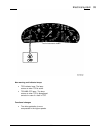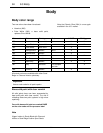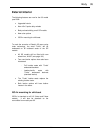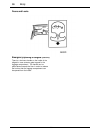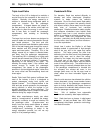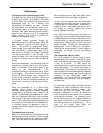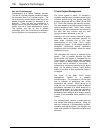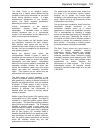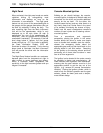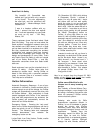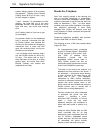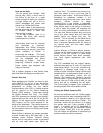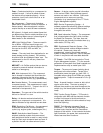
Signature Technologies 101
9-3
The Saab Trionic is an adaptive system,
meaning that it “learns” about different driving
conditions, storing this information for use when
similar driving conditions reoccur. It makes
instantaneous adjustments to fuel injection,
ignition and boost pressure parameters,
depending on external conditions.
Precise management of the engine’s
combustion process yields numerous
advantages. It becomes easier to reduce
exhaust emissions than in a conventional
system. Fuel consumption is also reduced as a
result of a more precise combustion.
In the Trionic system, the fuel injection valves
are individually controlled for each cylinder.
Each injection valve sprays two jets of fuel
toward the two intake valves of the cylinder. In
this way, fuel can be supplied to the engine with
even greater precision.
Before the injection valve opens, the
microprocessor initiates a phase in which it
computes the exact amount of fuel to be injected
into the cylinders based on engine load, RPM,
temperature, and other factors. Immediately
before the fuel injection phase is terminated, the
processor monitors whether the driver has
moved the accelerator pedal since this phase
began, and takes any necessary corrective
action. Fuel injection can be varied from two
milliseconds to the entire injection phase.
The wide range of control capability in fuel
injection is important when the fuel used may be
pure gasoline or a variety of different mixtures of
gasoline and alternative fuels, such as methanol
or ethanol. A Trionic system, in fact, is the key
to Saab’s prototype multi-fuel engine. This is
because in principle, fuel consumption is
doubled when the engine is burning alcohol
instead of gasoline.
Saab’s unique Direct Ignition (DI) system is also
incorporated in the Trionic system. The Saab DI
cassette is a capacitive ignition system without
moving parts. This eliminates starting problems
during moist and cold weather. The DI cassette
supplies a constant spark to each spark plug
and eliminates the need for a distributor cap and
spark plug wires. Each spark plug is equipped
with its own ignition coil, mounted inside a
cassette attached directly to the spark plug itself,
thus eliminating the need for ignition cables as
well. All ignition system components are housed
inside the cassette, where they are well
protected from dirt and moisture.
The spark plugs last several times longer than
the plugs in a conventional ignition system,
because the DI system can handle larger
variability in the electrode gap size of the spark
plugs. Ignition timing is set permanently at time
of production at the factory.
The fact that each combustion event forms ions
(electrically charged molecules) in the
combustion chamber opens up a unique
opportunity to monitor the combustion process.
This is accomplished by imposing a voltage
across the electrode gap during the combustion
phase of each plug. Measuring the current at
the control unit that is due to ionization makes it
possible to analyze the combustion process in
each cylinder. If knocking or misfiring occurs,
the boost pressure is adjusted immediately.
The Saab Trionic shows very good results in
terms of exhaust emissions, reducing
hydrocarbon, carbon monoxide and nitrogen
oxide levels. Previous Saab models already
achieved emissions below California’s legally
mandated maximum levels beginning with 1993
models. The Saab Trionic also provides unique
opportunities to further enhance the
performance of Saab engines. The 2.3-liter
turbocharged engine, for example, already
reaches its maximum output torque at a very low
1,800 RPM.



